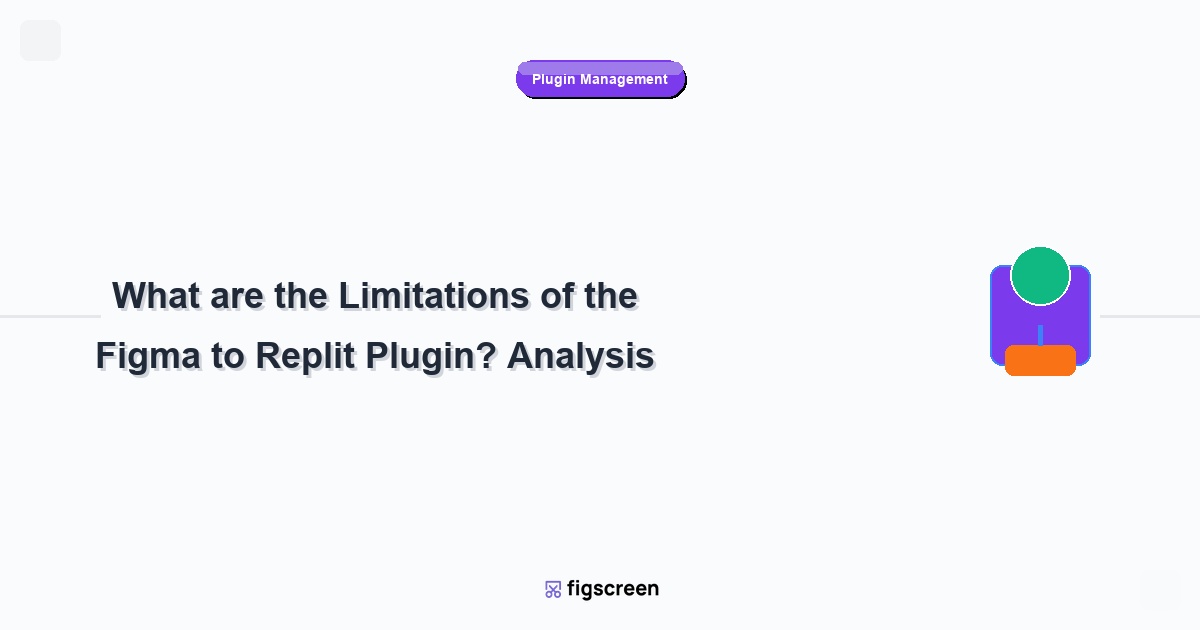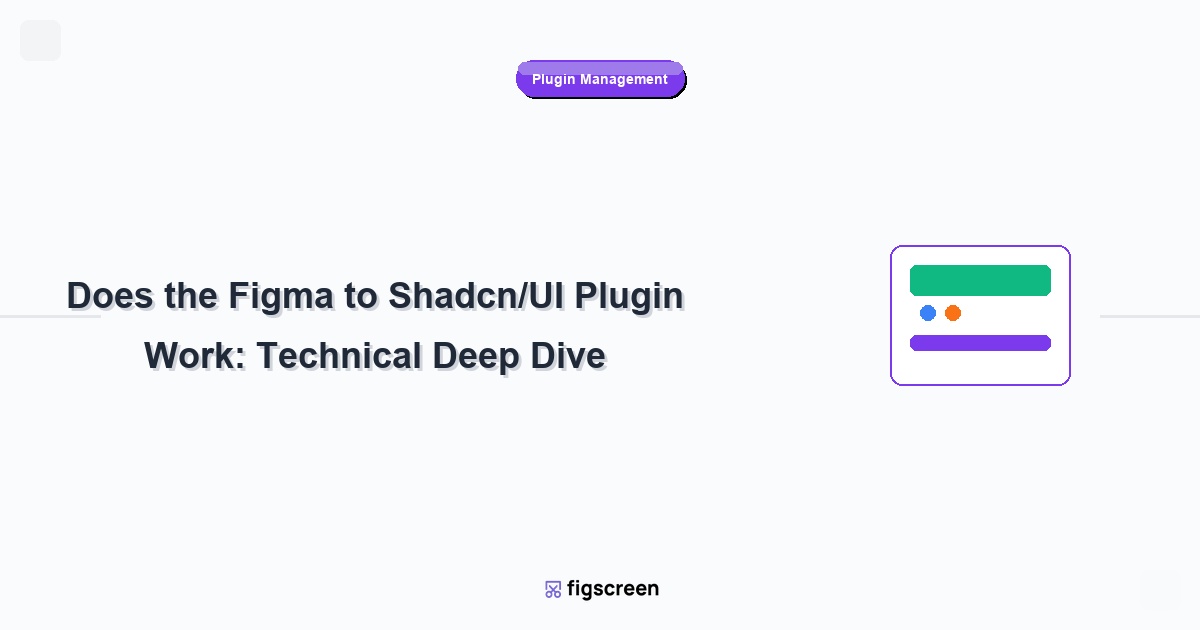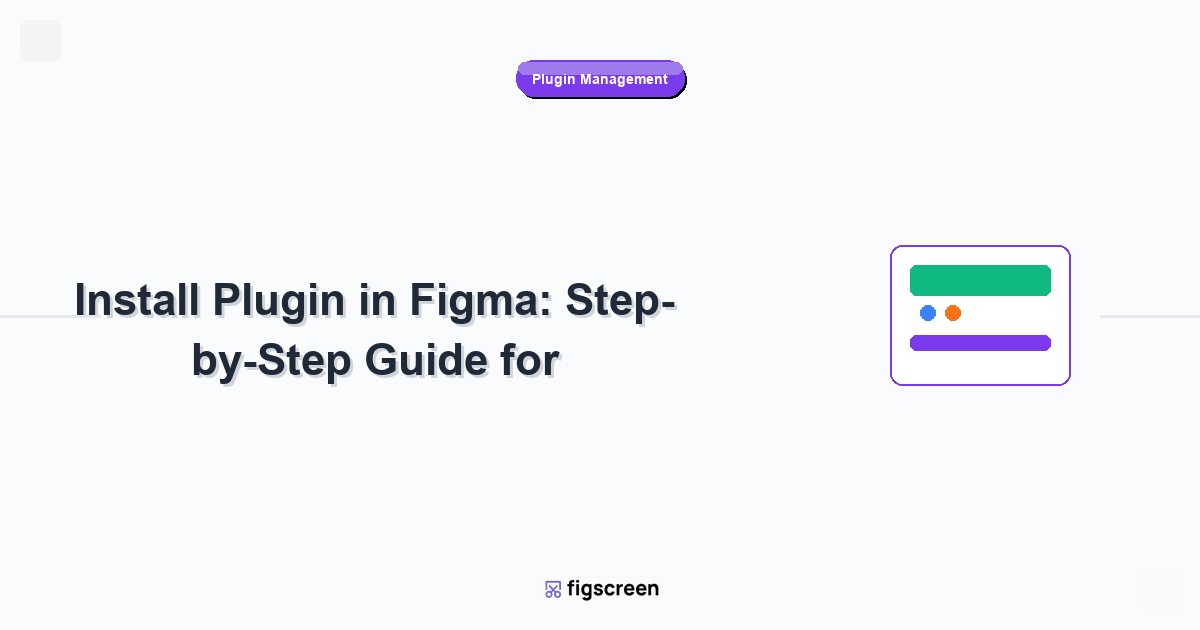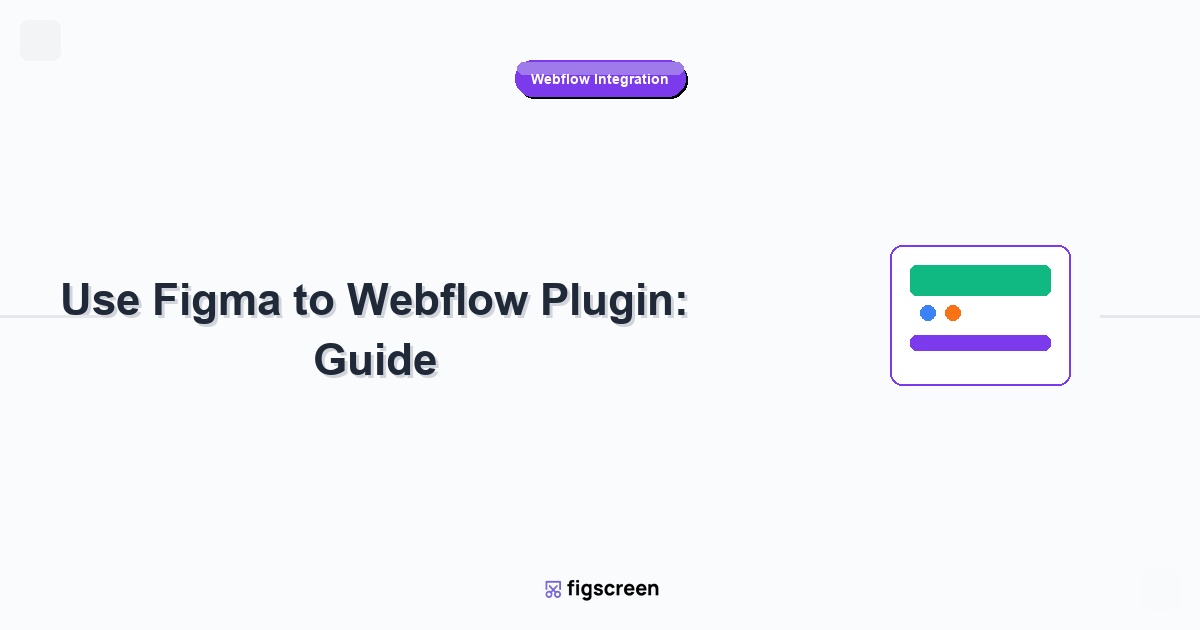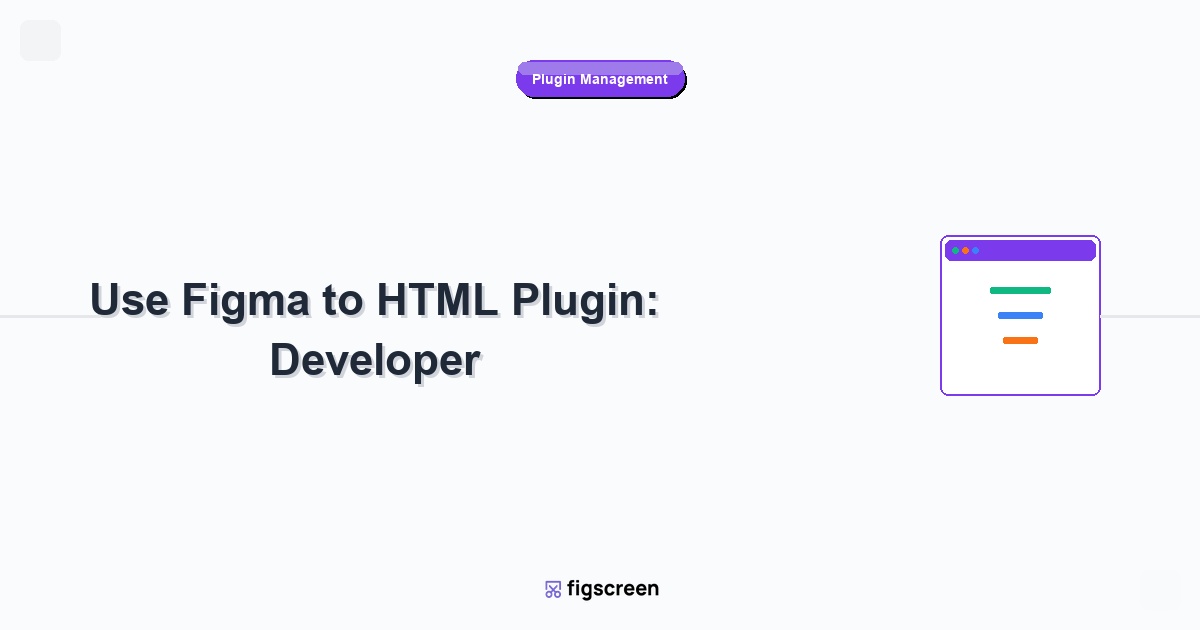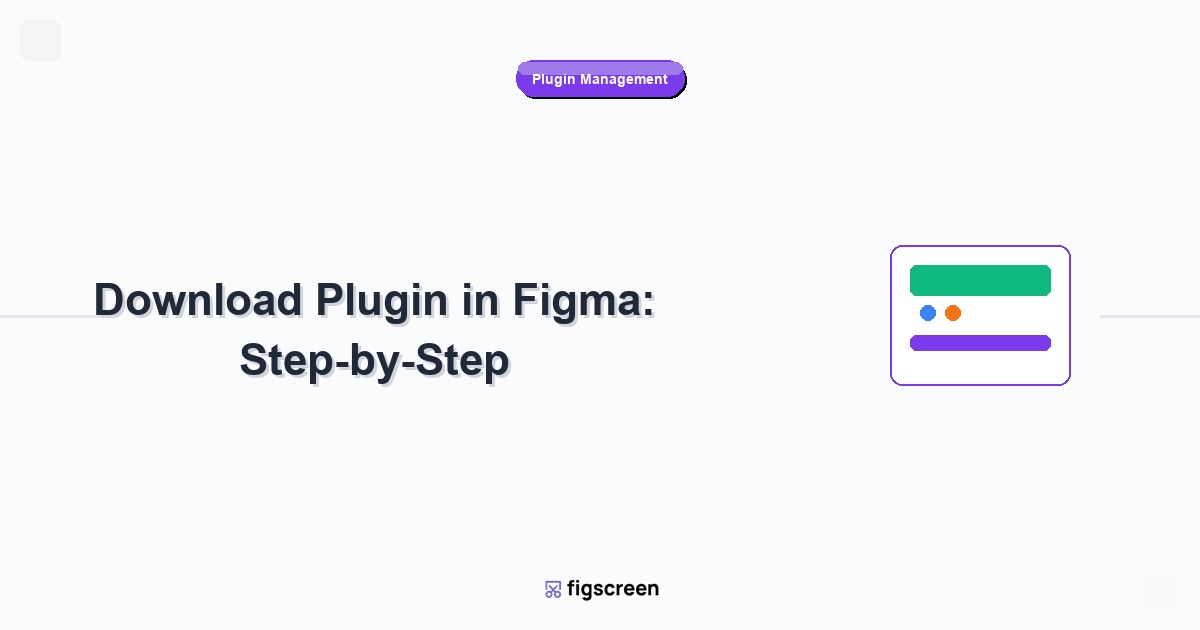The Figma to Replit plugin promises to bridge the gap between design and development by allowing designers to export their Figma designs directly to Replit’s development environment. While this integration offers exciting possibilities for streamlined workflows, it’s important to understand its limitations and constraints before building your design-to-development process around it.
Overview of Figma to Replit Plugin
What the Plugin Promises
The Figma to Replit plugin aims to provide:
- Direct Export – Send Figma designs directly to Replit projects
- Code Generation – Automatic creation of HTML, CSS, and JavaScript
- Instant Development – Quick transition from design to functional code
- Collaborative Workflow – Seamless handoff between designers and developers
- Rapid Prototyping – Fast creation of interactive prototypes
Expected User Experience
The ideal workflow would involve:
- Design in Figma – Create designs using Figma’s interface
- One-Click Export – Send designs to Replit with minimal configuration
- Generated Code – Receive clean, production-ready code
- Immediate Testing – Test functionality in Replit’s environment
- Iterative Development – Easily update designs and regenerate code
Technical Limitations
Code Generation Quality Issues
The plugin faces significant challenges in producing high-quality code:
- Layout Interpretation – Difficulty translating Figma’s absolute positioning to responsive layouts
- CSS Complexity – Generated styles often include unnecessary or inefficient CSS
- Semantic HTML – Limited ability to create meaningful HTML structure
- Accessibility Issues – Generated code rarely includes proper ARIA labels or semantic elements
- Performance Problems – Code output often lacks optimization for loading speed
Design Element Translation Problems
Certain Figma design elements don’t translate well to code:
- Complex Shapes – Custom vector graphics may not convert properly
- Effects and Filters – Advanced visual effects have limited CSS equivalents
- Auto Layout Nuances – Figma’s Auto Layout doesn’t always map to CSS Flexbox correctly
- Component Variants – Complex component states may not be preserved
- Nested Components – Deep component hierarchies can cause conversion issues
Responsive Design Challenges
Creating truly responsive designs presents significant hurdles:
- Breakpoint Translation – Figma breakpoints don’t automatically become CSS media queries
- Fluid Layouts – Converting fixed designs to flexible layouts is problematic
- Content Adaptation – Generated code struggles with variable content lengths
- Mobile Optimization – Mobile-specific considerations are often overlooked
Workflow and Integration Limitations
Design System Integration Issues
The plugin has difficulty working with sophisticated design systems:
- Token Translation – Design tokens don’t automatically become CSS custom properties
- Component Libraries – Figma components may not translate to reusable code components
- Style Consistency – Maintaining design system consistency in generated code is challenging
- Variable Mapping – Figma variables don’t map directly to development variables
Collaboration Workflow Problems
Team collaboration faces several obstacles:
- Version Control – Limited integration with Git and version control systems
- Update Synchronization – No clear path for updating code when designs change
- Developer Customization – Developers can’t easily modify generated code without breaking future updates
- Design Feedback Loop – Difficult to incorporate developer feedback back into Figma designs
Platform-Specific Constraints
Replit’s platform introduces its own limitations:
- Environment Restrictions – Limited to Replit’s supported frameworks and languages
- Performance Constraints – Replit’s free tier has computing limitations
- Customization Limits – Restricted ability to modify the development environment
- Deployment Options – Limited deployment and hosting options compared to other platforms
Quality and Accuracy Issues
Visual Fidelity Problems
The generated code often doesn’t match the original design:
- Spacing Inaccuracies – Margins and padding may not match design specifications
- Typography Issues – Font rendering and sizing problems
- Color Variations – Color values may not translate accurately
- Alignment Problems – Elements may not align as intended in the original design
- Missing Visual Effects – Shadows, gradients, and other effects may be lost or simplified
Interactive Element Limitations
Converting interactive designs to functional code presents challenges:
- Basic Interactions Only – Limited to simple click and hover states
- No Complex Logic – Cannot generate sophisticated JavaScript functionality
- Form Limitations – Form elements may lack proper validation and submission handling
- Animation Constraints – Complex animations don’t translate to CSS or JavaScript
Performance and Scalability Concerns
Code Efficiency Issues
Generated code often lacks optimization:
- Bloated CSS – Excessive and redundant style declarations
- Inline Styles – Heavy use of inline styles instead of efficient CSS classes
- Unused Code – Generated code may include unnecessary elements
- Poor Structure – HTML structure may not follow best practices
- Loading Performance – Generated pages may load slowly due to inefficient code
Scalability Problems
The plugin struggles with larger, more complex projects:
- Large File Processing – Performance degrades with complex Figma files
- Memory Limitations – May fail with designs containing many elements
- Processing Time – Slow conversion times for detailed designs
- Error Handling – Poor error recovery for failed conversions
Maintenance and Support Limitations
Update and Maintenance Issues
Long-term usage reveals maintenance challenges:
- Plugin Updates – Infrequent updates may leave bugs unresolved
- Figma API Changes – Plugin may break when Figma updates its API
- Replit Platform Changes – Updates to Replit may affect plugin functionality
- Documentation Quality – Limited or outdated documentation for troubleshooting
Support and Community Limitations
Users may face support challenges:
- Limited Official Support – Minimal direct support from plugin developers
- Small Community – Limited community resources and shared knowledge
- Bug Reporting – Unclear processes for reporting and tracking issues
- Feature Requests – No clear roadmap for future improvements
Alternative Solutions and Workarounds
Direct Alternatives to Figma-to-Replit
Consider these alternative design-to-code solutions:
- Anima Plugin – More sophisticated responsive design and code generation
- Figma to React Plugins – Specialized tools for React component generation
- Webflow Integration – Visual development platform with Figma integration
- Locofy.ai – AI-powered design-to-code conversion
- Builder.io – Visual development with Figma import capabilities
Hybrid Workflow Solutions
Combine different tools for better results:
- Design in Figma + Manual Coding – Use Figma for design, hand-code for quality
- Plugin + Developer Refinement – Use plugin for initial code, then refine manually
- Component Libraries – Build reusable components that match Figma designs
- Design System Integration – Use established design systems for consistency
Process Improvements
Optimize your workflow regardless of tool choice:
- Design for Development – Create Figma designs with code generation in mind
- Developer Collaboration – Involve developers early in the design process
- Incremental Approach – Build and test components incrementally
- Quality Assurance – Implement thorough testing for generated code
When the Plugin Might Work Despite Limitations
Suitable Use Cases
The plugin may be acceptable for certain scenarios:
- Simple Static Designs – Basic layouts without complex interactions
- Rapid Prototyping – Quick mockups that don’t require production quality
- Educational Projects – Learning exercises where perfection isn’t required
- Design Exploration – Testing design concepts before investing in development
- Personal Projects – Small projects where limitations are acceptable
Mitigating Strategies
If you choose to use the plugin despite limitations:
- Set Realistic Expectations – Understand that generated code will need refinement
- Plan for Cleanup – Budget time for code optimization and improvement
- Use as Starting Point – Treat generated code as a foundation, not final product
- Focus on Structure – Extract layout concepts rather than expecting perfect code
Future Outlook and Recommendations
Technology Evolution
Consider how the technology landscape is evolving:
- AI Improvements – Machine learning may improve code generation quality
- Platform Integration – Better integration between design and development tools
- Standard Development – Industry standards for design-to-code conversion
- Tool Maturation – Existing tools continuing to improve and evolve
Strategic Recommendations
For teams considering design-to-code solutions:
- Evaluate Alternatives – Research multiple solutions before committing
- Pilot Testing – Test tools with real projects before full adoption
- Skill Development – Invest in team skills for both design and development
- Process Focus – Optimize collaboration processes alongside tool selection
- Gradual Adoption – Implement new tools gradually rather than completely replacing existing workflows
Making an Informed Decision
Evaluation Criteria
When assessing the Figma to Replit plugin or alternatives:
- Project Requirements – Match tool capabilities to project needs
- Team Skills – Consider team’s technical abilities and learning capacity
- Quality Standards – Determine acceptable quality levels for your projects
- Timeline Constraints – Balance speed gains against quality compromises
- Long-term Maintenance – Consider ongoing support and evolution needs
Decision Framework
Use this framework to evaluate design-to-code tools:
- Define Success Criteria – Clearly specify what success looks like for your use case
- Test with Real Projects – Use actual project files for evaluation
- Measure Quality Gaps – Quantify the difference between generated and desired output
- Calculate Total Cost – Include time for cleanup and refinement in cost calculations
- Plan Fallback Options – Have alternative approaches ready if the tool doesn’t work
Conclusion
The Figma to Replit plugin represents an ambitious attempt to streamline design-to-development workflows, but it faces significant limitations in code quality, responsive design translation, and complex interaction handling. While it may serve specific use cases like rapid prototyping or simple static designs, it’s not suitable for production-quality development work without substantial manual refinement.
Before adopting this or any design-to-code tool, carefully evaluate your specific needs, quality requirements, and team capabilities. Consider the plugin as one option among many, and be prepared to supplement automated generation with manual development work to achieve professional results. The most successful design-to-development workflows often combine multiple tools and approaches rather than relying on a single automated solution.
Build Better Design-to-Development Workflows
While automated code generation has limitations, Figscreen provides a reliable foundation for design research by capturing accurate website screenshots that inform better design decisions from the start.
